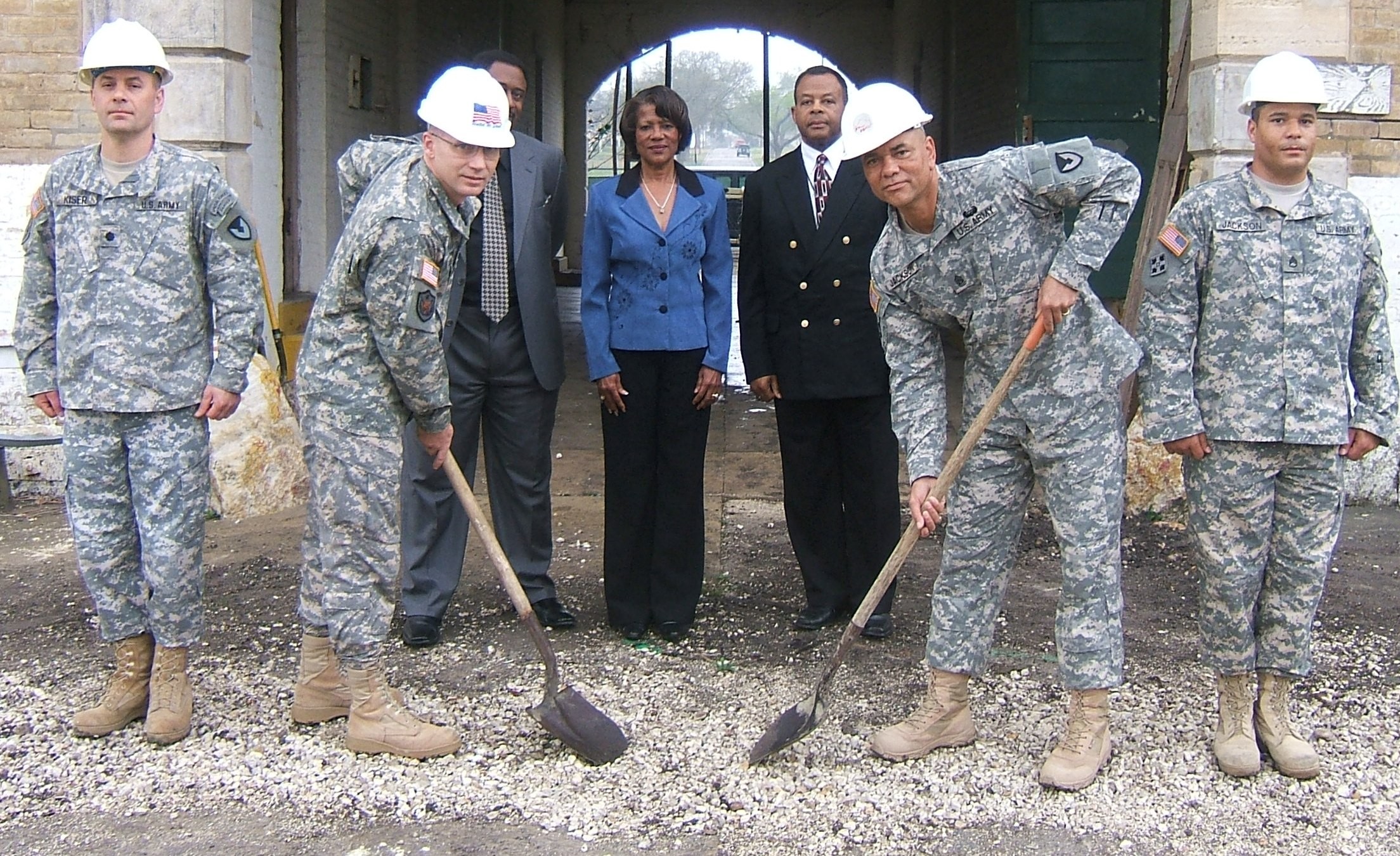
Some of the oldest structures on Fort Sam Houston are in the midst of spit-and-polish cleaning and major renovations. The famed Long Barracks is being converted into an Army Contracting Command campus, set to open November 2011.
"The project began in September 2009 and is on course for an on-time completion," said Robay Geary, logistics director for the Mission and Installation Contracting Command. "When completed, the refurbished building, along with several others in the area, will serve as a hub for about 80 percent of all Army contracting organizations."
The U.S. Army Mission and Installation Contracting Command, is a subordinate command of th eArmy Contracting Command and is part of the Army's Generating Force, plans, integrates, awards, and administers contracts throughout the Army Force Generation Cycle supporting the Army Commands, Direct Reporting Units, U.S.Army North and other organizations to provide the best value for the mission, Soldiers and their Families. The command functions as an integral and indispensable partner in accomplishing the Army's mission through contracted materiel and services solutions.
Renovations to the 1,081-foot-long building, costing approximately $25.5 million, are being funded by MICC and carried out by RKJ Construction, a private company out of Lampasas, Texas.
RKJ has worked extensively with the Department of Defense and on other buildings on Fort Sam Houston, such as Building 2000 (the 1890s-era hospital due to be home to the Installation Management Command).
Authorized in 1875 and completed in 1879, Fort Sam Houston was the U.S. Army's principal supply base in the Southwest; the fort supplied the "Rough Riders" in 1898 and Pershing's Mexican campaign in 1916.
Experiments with the Wright biplane here led to the establishment of the Signal Corps' aviation section in 1914.
Since it was first built in the late 1880s, the Building 600 area, which represents the oldest group of buildings on Fort Sam Houston, has served a variety of functions and purposes.
Originally built as officers' quarters and barracks, these structures are attached by common two-story walls and have masonry exteriors, wooden floors and tin roofs. Used as offices until the 1980s, the Long Barracks was also used to house conscientious objectors during the Korean Conflict and Vietnam War eras. Basic training was six weeks for the COs instead of the usual eight weeks, since it didn't include weapons training.
After basic, the objectors would report directly for training to the other side of the post to become Army medics.
COs during that era reported they were well taken care of while at FSH, and while they were housed separately, many were highly decorated. Two received the Medal of Honor.
Thomas W. Bennett and Joseph Guy LaPointe Jr. became the only conscientious objectors housed at the Long Barracks to earn the Medal of Honor in the Vietnam War, and only the second and third COs in history to be so recognized. (Desmond Doss, a medic in World War II, was the first.) Both Bennett and LaPointe were killed in action in 1969 and posthumously awarded the Medal of Honor.
One of the Army's oldest active posts, 500 of Fort Sam's 3,000 acres sit in a National Historic Landmark District with many historic buildings still used as offices and homes. Others, like the Long Barracks and other nearby buildings, have sat unused and vacant for years, becoming decrepit and falling into disrepair.
"The inside of the buildings are being stripped down to the wood," said Jim Michel, project engineer from the San Antonio area office of the U.S. Army Corps of Engineers. "All the existing interior partitions, electrical wiring, plumbing, climate control systems, and interior and exterior lighting fixtures will be ripped out and replaced. Stairways, ceilings, wooden floors, structural roof members, interior and exterior doors and windows are also being repaired, refinished or replaced. The new dropped ceiling will have the same pattern as the original tin ceiling."
The Long Barracks was among more than four dozen Fort Sam buildings designed by San Antonio architect Alfred Giles during the late 19th and early 20th century. Giles, an Englishman who settled in the United States, also designed the Infantry Post Barracks, Officers' Quarters, Staff Post; and Commanding General's Quarters.
Among Giles' most important local buildings are the Mother House and Convent at the University of the Incarnate Word; Daniel Sullivan's Stable and Coach House at the San Antonio Botanical Gardens; the 1909 addition to the Menger Hotel; the Steves Homestead in the King William district and the Municipal Market House at El Mercado.
Building 613 is a three-story structure that is located in the middle of the Building 600 area and sits over what was called the "Sally Port." It was constructed in 1887 as a regimental headquarters and has masonry exterior walls and wooden floors.
"This area will become the command suite for the new contracting campus," Geary said. "The Long Barracks can hold about 300 people, but will more likely have about 280, as certain areas will be used for storage, break rooms, etc. The new space will be vital to the MICC's ongoing mission at Fort Sam Houston.
"The leadership is happy to move into such an historic building," Geary added. "We've been going over designs for more than a year and we are making sure it will be up to all the Army's standards."

Social Sharing